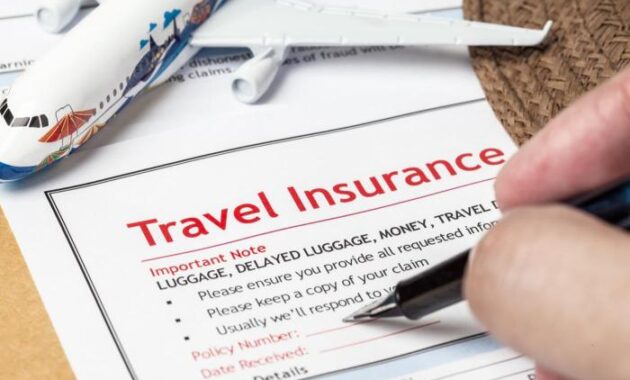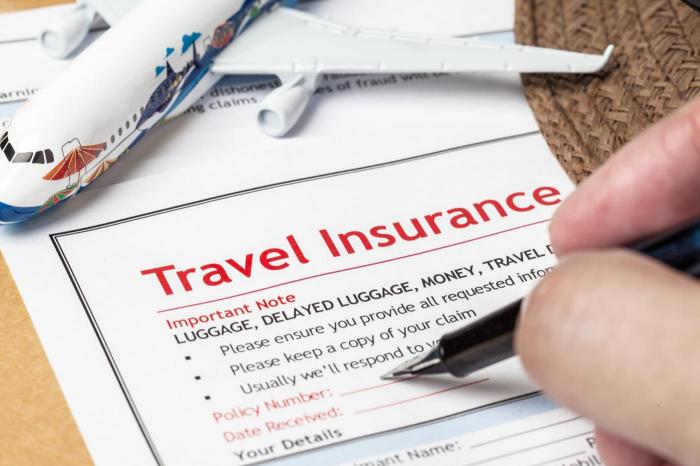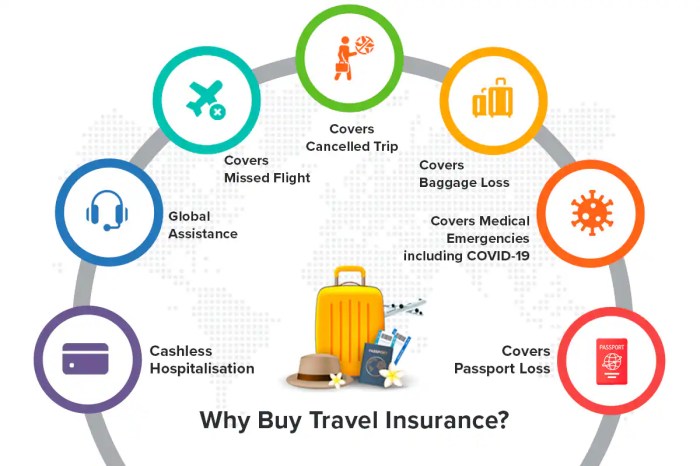
Planning a European getaway? The excitement of exploring ancient ruins, vibrant cities, and breathtaking landscapes is undeniable. However, unforeseen circumstances can quickly dampen the spirit of adventure. This comprehensive guide delves into the crucial aspect of travel insurance for your European trip, equipping you with the knowledge to choose the right coverage and navigate potential challenges with confidence. We’ll explore various plan types, essential coverage considerations, cost-influencing factors, and the claims process, ensuring a smooth and worry-free journey across the continent.
From understanding the nuances of different policy types to navigating the complexities of Schengen visa requirements, we aim to provide a clear and practical roadmap for securing your trip. We’ll address common concerns and offer actionable advice to help you make informed decisions, allowing you to focus on the joy of exploration rather than the anxieties of the unexpected.
Types of European Travel Insurance
Choosing the right travel insurance for your European adventure is crucial for peace of mind. The level of coverage you need depends on factors such as the length of your trip, your planned activities, and your personal risk tolerance. Understanding the different types of plans available will help you make an informed decision.
European Travel Insurance Plan Comparison
The following table compares three common types of European travel insurance plans: Basic, Comprehensive, and Specialized. Note that prices are estimates and can vary significantly based on the insurer, your age, trip length, and destination.
| Plan Name | Coverage Highlights | Price Range | Exclusions |
|---|---|---|---|
| Basic | Emergency medical expenses (limited), trip cancellation (limited), lost luggage (limited). | $50 – $150 | Pre-existing conditions, adventurous activities (e.g., skiing, scuba diving), alcohol-related incidents, lost valuables. |
| Comprehensive | Emergency medical expenses (extensive), trip cancellation (extensive), lost luggage (extensive), 24/7 emergency assistance, repatriation. | $150 – $300+ | Pre-existing conditions (unless specifically covered with an additional rider), reckless behavior, war or terrorism (unless specifically covered with an additional rider). |
| Specialized | Tailored coverage for specific needs, such as adventure sports, winter sports, or business trips. May include higher coverage limits for specific activities. | $200+ | Exclusions vary widely depending on the specific policy and the activities covered. Always check the policy details carefully. |
Benefits and Drawbacks of Different Plans
Each plan type offers a different balance between cost and coverage. Consider the following scenarios:
* Medical Emergency: A basic plan might only cover a portion of medical expenses, potentially leaving you with significant out-of-pocket costs. A comprehensive plan would provide more extensive coverage, reducing financial burdens. A specialized plan might offer even greater coverage for specific medical needs related to your activities.
* Trip Cancellation: A basic plan typically offers limited coverage for trip cancellations, often only covering specific reasons like severe weather or family emergencies. Comprehensive plans usually offer broader coverage, including cancellations due to illness or unforeseen circumstances. Specialized plans might have specific cancellation provisions based on their focus.
* Lost Luggage: Basic plans generally offer a low coverage limit for lost luggage, while comprehensive plans offer significantly higher limits. Specialized plans might provide enhanced coverage if your luggage contains expensive equipment relevant to your activities (e.g., ski gear).
Travel Insurance Plan Selection Flowchart
Imagine a flowchart. It begins with a central question: “What is your trip’s risk profile and budget?”
Branch 1: Low risk, low budget – leads to “Basic Plan.” This branch might include sub-branches based on specific trip characteristics. For example, a short trip might suggest a lower coverage level than a longer one.
Branch 2: Moderate risk, moderate budget – leads to “Comprehensive Plan.” This might also include sub-branches. For example, the type of activities could influence the decision. A trip with moderate activities may be appropriate for a comprehensive plan.
Branch 3: High risk, higher budget – leads to “Specialized Plan.” This branch might involve further branching to select the appropriate specialized coverage based on the specific activity. A high-risk activity would require a higher level of specialized coverage.
The flowchart ends with a decision box: “Choose your plan.”
Essential Coverage Considerations for Europe

Planning a European adventure requires careful consideration, and securing the right travel insurance is paramount. A comprehensive policy can provide peace of mind, protecting you from unexpected events and significant financial burdens. This section highlights crucial coverage elements to ensure your trip remains enjoyable and stress-free.
Choosing the right European travel insurance policy involves carefully assessing your needs and selecting a plan that offers comprehensive protection. Consider the potential costs associated with medical emergencies, trip cancellations, and lost belongings when making your decision. It’s always better to be over-prepared than under-prepared when it comes to travel insurance.
Essential Coverage Elements
Several key coverage areas should be included in your European travel insurance policy. These elements provide comprehensive protection against a wide range of potential issues, ensuring you are financially protected in unforeseen circumstances. Failure to secure adequate coverage in these areas could lead to significant financial losses.
- Medical Expenses: This covers the costs of emergency medical treatment, hospitalization, and doctor visits. Ensure the policy has a high enough coverage limit to account for potentially expensive European healthcare.
- Repatriation: This covers the cost of transporting you back to your home country in case of a medical emergency or other unforeseen circumstances. This is particularly important considering the potential logistical complexities of international medical transfers.
- Emergency Medical Evacuation: This covers the cost of transporting you to the nearest appropriate medical facility, which could be crucial in situations requiring specialized care not readily available in your current location. This is different from repatriation, which focuses on returning you home.
- Trip Cancellation/Interruption: This covers the costs associated with cancelling or interrupting your trip due to unforeseen circumstances such as illness, injury, or severe weather.
- Lost or Stolen Belongings: This covers the replacement cost of lost or stolen personal belongings, up to a specified limit. Remember to keep detailed records of your belongings and their value.
- Personal Liability: This protects you against claims of accidental injury or damage to property caused by you to others.
Medical Evacuation Coverage
Medical evacuation coverage is of paramount importance when traveling in Europe. The cost of emergency medical transport can be incredibly high, potentially reaching tens of thousands of dollars or euros. Furthermore, the logistical challenges involved in coordinating such transport across international borders can be significant. A robust medical evacuation policy ensures you receive timely and appropriate care, regardless of location or the complexity of the situation. Consider a scenario where you suffer a serious injury in a remote area of the Alps; without adequate medical evacuation coverage, the cost of transporting you to a suitable hospital could be financially devastating.
Pre-existing Medical Conditions
Many insurers offer coverage for pre-existing medical conditions, but it often requires disclosing these conditions during the application process and potentially obtaining a waiver or adjusting the policy terms. It’s crucial to be completely transparent about your medical history. Failure to disclose pre-existing conditions could result in claims being denied. The process typically involves providing detailed medical information to the insurer, who will then assess the risk and determine the appropriate level of coverage, if any. Some insurers may require additional medical examinations or impose higher premiums for individuals with pre-existing conditions. It is imperative to discuss your pre-existing conditions with the insurer before purchasing a policy to ensure adequate coverage.
Factors Influencing Insurance Costs
Several factors interact to determine the final price of your European travel insurance. Understanding these elements allows for informed decision-making and potentially finding more cost-effective coverage. The cost isn’t simply a fixed amount; it’s a calculation based on your individual circumstances and the risks involved.
Factors Affecting European Travel Insurance Premiums
The cost of your travel insurance policy is influenced by a combination of factors. A higher risk profile generally translates to a higher premium.
| Factor | Impact on Cost | Explanation | Example |
|---|---|---|---|
| Age | Increases with age | Older travelers are statistically at a higher risk of needing medical attention, leading to higher premiums. Pre-existing conditions can also significantly impact cost. | A 65-year-old traveler will typically pay more than a 25-year-old, especially if they have health concerns. |
| Trip Length | Increases with duration | The longer your trip, the greater the chance of an incident requiring insurance coverage. | A two-week trip will cost more than a long weekend. |
| Destination within Europe | Varies by country | Medical costs and risk levels differ across European countries. Some countries have higher healthcare expenses than others. Locations with higher crime rates might also influence premiums. | Travel insurance to Switzerland, known for high medical costs, will likely be more expensive than travel to Portugal. |
| Level of Coverage | Increases with coverage | Comprehensive plans with extensive medical, baggage, and cancellation coverage are more expensive than basic plans. | A policy covering $1 million in medical expenses will be more expensive than a policy covering $50,000. |
Hypothetical Scenario: Comparing Insurance Costs
Let’s consider two travelers:
* Traveler A: A 30-year-old individual traveling to Spain for a week with a basic travel insurance plan covering only essential medical and baggage loss.
* Traveler B: A 60-year-old individual with pre-existing conditions traveling to Switzerland for three weeks with a comprehensive plan including medical expenses, trip cancellation, and emergency medical evacuation.
Traveler B will undoubtedly pay significantly more for their insurance than Traveler A. The higher age, longer trip duration, more expensive destination (Switzerland), and higher level of coverage all contribute to a substantially increased premium. While a precise cost difference cannot be given without specific policy details, it’s reasonable to expect a difference of several hundred dollars, or even more. The difference highlights the importance of considering your individual needs and risk profile when selecting a travel insurance policy.
Filing a Claim
Filing a travel insurance claim can seem daunting, but understanding the process can make it significantly less stressful. Remember to always refer to your specific policy documents for detailed instructions and requirements, as processes can vary between insurers. Generally, however, the process follows a similar pattern.
Promptly reporting your incident is crucial. The sooner you notify your insurer, the faster they can begin processing your claim. Failing to report promptly could jeopardize your coverage.
Claim Filing Process
The steps involved in filing a claim typically include the following:
- Report the Incident: Contact your insurance provider immediately after the incident occurs. This is usually done via phone or through their online portal. Provide a brief summary of the event and obtain a claim reference number.
- Gather Necessary Documentation: Collect all relevant documents that support your claim. The specific documents required will depend on the nature of the incident. See the following section for details.
- Submit Your Claim: Submit your claim form along with all supporting documentation. This is typically done online, by mail, or by fax, depending on your insurer’s procedures.
- Claim Review and Processing: Your insurer will review your claim and the supporting documentation. This process can take several weeks, depending on the complexity of the claim and the volume of claims they are currently processing.
- Claim Decision and Payment: Once your claim is reviewed, you will receive a decision from your insurer. If approved, payment will be processed according to the terms of your policy. This may involve direct reimbursement or payment to a third party (e.g., a hospital).
Required Documentation
The documentation you need to support your claim will depend on the type of incident. However, some common documents include:
- Completed Claim Form: This form is provided by your insurer and requires detailed information about the incident and your claim.
- Medical Bills and Reports: If your claim involves medical expenses, you’ll need detailed bills and reports from doctors, hospitals, or other healthcare providers. These should clearly show the dates of service, the services rendered, and the total cost.
- Police Report: If the incident involved theft, an accident, or any criminal activity, a copy of the police report is essential. This report should document the details of the event and any official findings.
- Flight Itineraries and Boarding Passes: These documents confirm your travel dates and destinations and can help establish your presence in Europe during the incident.
- Photos and Videos: Visual evidence of the incident, such as photos of damaged luggage or a scene of an accident, can significantly strengthen your claim.
- Receipts: For claims related to lost or stolen belongings, receipts providing proof of purchase are necessary.
Claim Processing Timeframe
The time it takes to process a travel insurance claim can vary greatly depending on the insurer, the complexity of the claim, and the availability of required documentation. While some simple claims might be processed within a few weeks, more complex claims involving significant medical expenses or legal issues could take several months. It’s advisable to check with your specific insurer for estimated processing times.
For example, a straightforward claim for lost luggage might be processed within 4-6 weeks, while a claim involving a serious medical emergency requiring hospitalization could take 8-12 weeks or longer. Always maintain open communication with your insurer throughout the process to stay updated on the progress of your claim.
Tips for Choosing a Reputable Provider
Selecting the right travel insurance provider is crucial for a worry-free European adventure. A reputable company will offer comprehensive coverage, efficient claims processing, and excellent customer service. Making an informed decision requires careful consideration of several key factors.
Choosing a reliable travel insurance provider involves more than just comparing prices. A thorough assessment of the provider’s reputation, financial stability, and claims handling process is essential to ensure you’re adequately protected.
Factors to Consider When Selecting a Travel Insurance Provider
- Check the Provider’s Licensing and Accreditation: Verify that the provider is properly licensed and accredited in your country of residence and operates legally within the European Union. Look for affiliations with reputable organizations. For example, in the US, look for membership in the U.S. Travel Insurance Association (USTIA). This indicates adherence to industry best practices.
- Examine the Policy’s Coverage Details: Carefully review the policy wording, paying close attention to exclusions and limitations. Ensure the coverage aligns with your trip’s specifics, including activities and destinations. Consider whether it covers medical emergencies, trip cancellations, lost luggage, and other potential issues.
- Assess the Provider’s Financial Strength and Stability: Research the provider’s financial stability. A financially sound company is more likely to be able to pay out claims. You can often find this information on the provider’s website or through independent rating agencies. Look for indicators of long-term stability and a strong claims-paying history.
- Review Customer Reviews and Ratings: Check independent review sites and forums for customer feedback on the provider’s claims-handling process, customer service responsiveness, and overall satisfaction. Pay close attention to both positive and negative reviews to get a balanced perspective.
- Understand the Claims Process: Clearly understand the provider’s claims process, including required documentation, timelines, and contact information. A transparent and easily accessible claims process is a hallmark of a reputable provider. Look for providers with online claim submission portals and readily available customer support.
Verifying Provider’s Financial Stability and Claims Handling
Verifying a provider’s financial stability often involves checking independent rating agencies such as A.M. Best (for US-based providers) or similar agencies in your country. These agencies assess the insurer’s financial strength and ability to pay claims. A high rating indicates a strong financial position. For claims handling, researching customer reviews on sites like Trustpilot or Yelp provides valuable insights into the provider’s efficiency and responsiveness in handling claims. Look for reviews that detail the speed of processing, the clarity of communication, and the overall fairness of the claims settlement. For example, a review mentioning a quick and easy process for a lost luggage claim would be positive, while a review detailing lengthy delays and difficult communication would be a red flag.
Travel Insurance and Schengen Visa Requirements

Applying for a Schengen visa often necessitates proof of adequate travel insurance. This insurance acts as a safeguard, ensuring you can cover unexpected medical expenses or other emergencies during your trip, thus reassuring the visa-issuing authorities that you won’t become a burden on their healthcare system or other public services. The specific requirements can vary slightly depending on the embassy or consulate, but the core principle remains consistent: sufficient coverage to mitigate potential risks.
Many Schengen visa applications require proof of travel medical insurance with a minimum coverage amount. This policy must cover medical expenses, repatriation, and potentially other unforeseen circumstances. Failure to provide sufficient proof of insurance is a common reason for visa application rejection. The insurance policy must be valid for the entire duration of your intended stay within the Schengen Area.
Minimum Coverage Requirements for Schengen Visas
Schengen visa authorities typically stipulate a minimum coverage amount for travel insurance. While the exact amount may vary slightly, it generally ranges from €30,000 to €50,000. This sum represents the minimum financial protection the insurance policy must offer to cover medical expenses, including emergency hospitalizations, medical evacuations, and repatriation in case of death or serious illness. It’s crucial to confirm the precise minimum requirement with the specific embassy or consulate you’re applying through, as this information is not standardized across all issuing authorities. The insurance must also be valid for the entire duration of your intended stay within the Schengen Area and cover the entire Schengen territory.
Examples of Insurance Policies Meeting Schengen Requirements
Several reputable travel insurance providers offer policies that meet or exceed the minimum coverage requirements for Schengen visas. These policies typically include comprehensive medical coverage, emergency medical evacuation, repatriation of remains, and sometimes additional benefits like trip cancellation or interruption coverage. It’s advisable to carefully review the policy documents to ensure they meet the specific requirements Artikeld by the relevant embassy or consulate. Examples of such providers often include well-known international travel insurance companies, but the specific provider and their policy should be carefully chosen to meet the precise needs of the individual applicant and their trip. It’s essential to ensure the policy clearly states the coverage amount, the geographical area of coverage (the entire Schengen Area), and the duration of coverage (matching your intended stay). Obtaining a confirmation or certificate from the insurance provider explicitly stating compliance with Schengen visa requirements is highly recommended.
Conclusive Thoughts

Embarking on a European adventure should be a thrilling experience, and proper travel insurance is your key to peace of mind. By carefully considering your needs, understanding the various coverage options, and choosing a reputable provider, you can safeguard your investment and protect yourself against potential setbacks. Remember, thorough preparation is paramount; a well-chosen travel insurance policy allows you to fully immerse yourself in the richness of European culture and landscapes, knowing you’re protected every step of the way.
FAQ Corner
What is the difference between comprehensive and basic travel insurance?
Comprehensive plans offer broader coverage, including medical emergencies, trip cancellations, lost luggage, and more. Basic plans typically cover fewer scenarios and often have lower premiums.
Do I need travel insurance if I already have health insurance?
Your existing health insurance may not cover medical expenses abroad, or may only offer limited coverage. Travel insurance provides crucial supplementary protection for medical emergencies, repatriation, and other travel-related issues.
How long does it take to process a travel insurance claim?
Processing times vary depending on the insurer and the complexity of the claim. It typically ranges from a few days to several weeks.
What happens if I need to cancel my trip due to a medical emergency?
If your policy covers trip cancellations due to illness, you should contact your insurer immediately and follow their claim procedures. Provide necessary documentation, such as medical certificates.
Can I purchase travel insurance after my trip has started?
Most insurers require you to purchase insurance before your trip begins. However, some may offer limited coverage if purchased after departure, but at a higher cost and with restrictions.